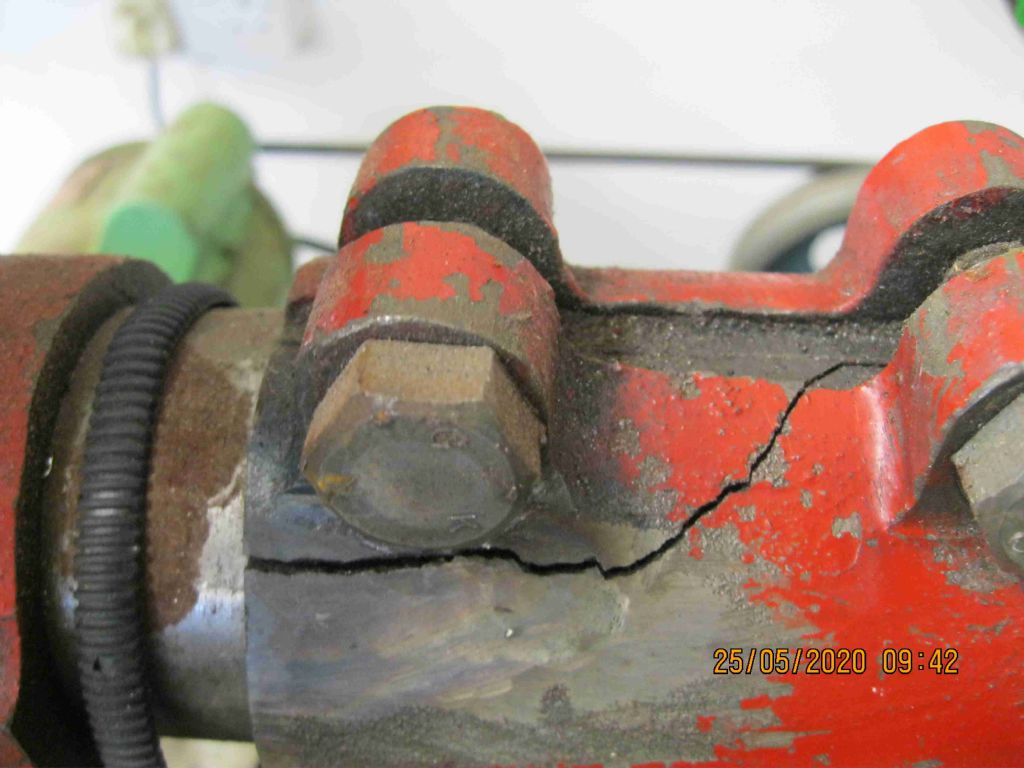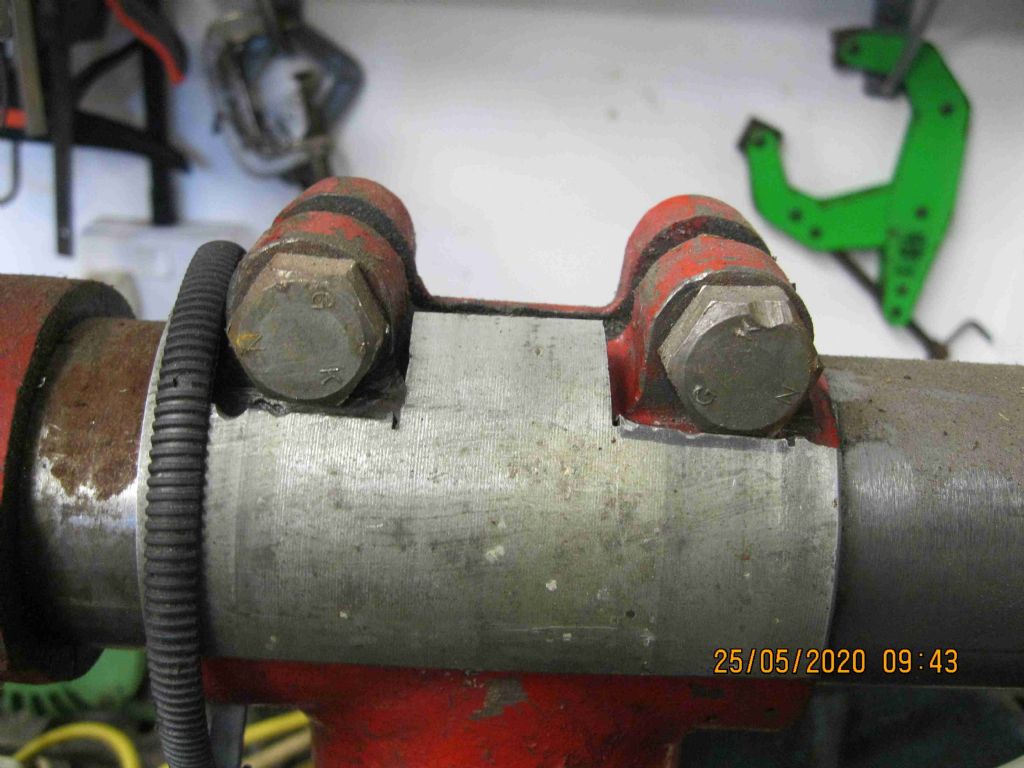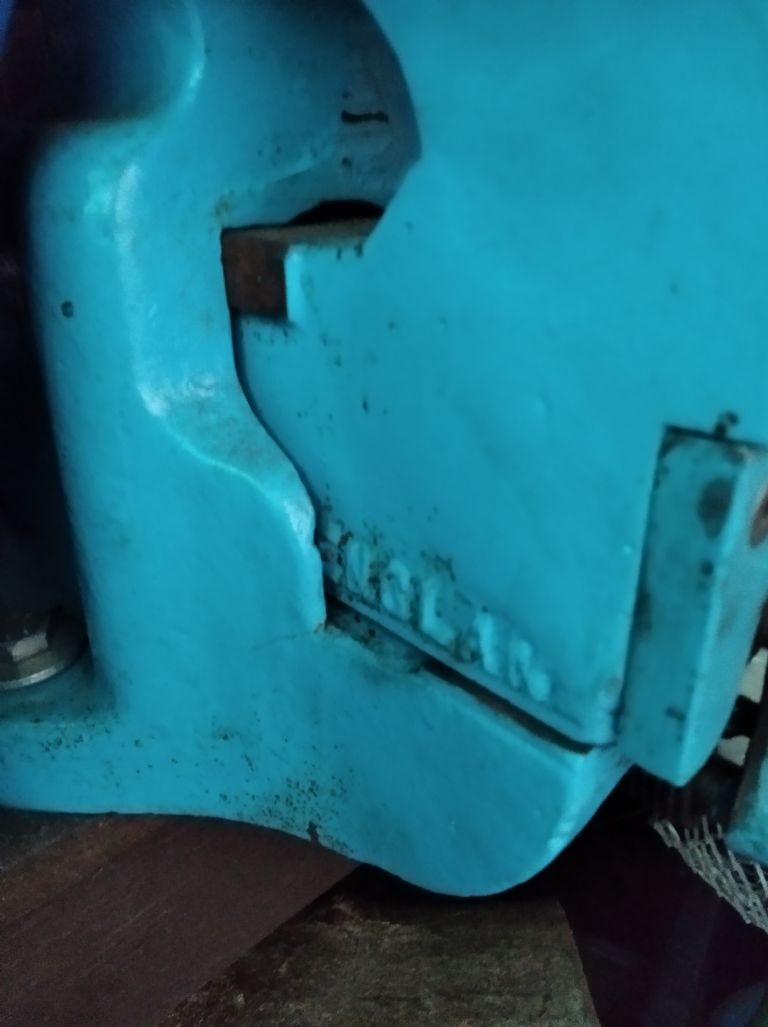Bill
Plenty of joint area there which helps.
I've done satisfactory repairs to cast iron with ordinary stick welder rods using the old fashioned, field expedient, puddling approach. The basic process is to create a nice wide Vee in the joint area for easy access and lay down multiple, thin layers of weld metal using a thin rod at the lowest practical current. During cool down the weld area should be aggressively peened with the chipping hammer. Once you have a reasonable build of weld metal you can finish off with a more usual, but still small, size rod and current. Still can't do it in one hit, two or three layers on a joint like yours I'd say, and aggressive peening during cooldown remains essential.
My practice is to do the small rod build up bit first then leave for an hour or so to ensure its all properly cooled down.
Theory is that the initial multiple thin layers pretty much isolate the joint proper from any carbon migration and associated brittleness. Aggressive peening stretches the weld surface minimising stresses due to contraction.
All goes much better with a good inverter welder than with a buzz box because you can reliably operate at lower currents. I'd have just Vee'd out the original crack and stuck it together. But I've done it before a time or three and my little Fronius welder is really good.
If you have a choice use the most ductile breed of ordinary rod you can find. Never, ten thousand times never, use "proper" cast iron welding rods. These must be used on preheated castings and the instructions followed exactly. I recall a friend being given a couple of such rods which he used with disastrous results. Stuck together OK but massive lumps everywhere and harder than a woodpeckers beak. An angle grinder would barely touch the stuff. Knowing him he'd got hold of something really exotic for super-strength repairs.
Clive
Keith Long.









